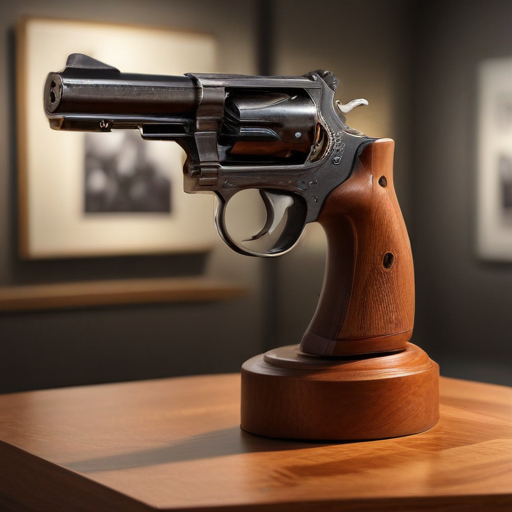Summary: Seventy years after Emmett Till’s murder, Mississippi acquires the pistol believed to be the weapon used in the killing. The gun, associated with Roy Bryant’s half-brother J.W. Milam, will join the state’s civil rights collection and be displayed at the Mississippi Civil Rights Museum, offering a fuller, unflinching account of the 1955 case and its lasting impact on American history.
A historic artifact has joined Mississippi’s civil rights collection: the murder weapon used in the lynching of 14-year-old Emmett Till. The state’s Department of Archives and History confirms that the pistol, along with a leather holster bearing Milam’s initials, is now part of the museum’s holdings and will be displayed at the Mississippi Civil Rights Museum.
Officials say the gun is tied to the 1955 killing in Money, Mississippi, a case that galvanized the civil rights movement around the world. Nan Prince, the department’s director of collections, described the pistol as a powerful—the most significant—artifact she has encountered in her career. The weapon’s presence helps tell the full, harrowing story of Till’s abduction, torture, and death, and the way it reverberated through American history.
Till’s cousin Wheeler Parker Jr., the last living eyewitness, recalls the night of the crime when a group of men came to Till’s relatives’ home with a pistol and a flashlight. Till, Parker says, had teased a white store owner, an act that, in the Jim Crow South, carried deadly risk. The following days culminated in Till’s body being found in the Tallahatchie River, weighted down after a brutal beating.
The gun’s provenance is now more clearly connected to the case. Milam and Bryant were acquitted by an all-white jury in 1955, but both later confessed in interviews with Look magazine. The weapon itself was never introduced at trial, yet FBI records indicate that the gun’s serial number matches the number on file when the case was reopened in the early 2000s. Newly released documents from the Civil Rights Cold Case Records Review Board have added to the case’s documentary record.
The Foundation for Mississippi History purchased the weapon and donated it to the state archives, which had long searched for it. The gun had been kept by a family in the Mississippi Delta, who chose to remain anonymous before sharing its story with historians and the public.
“It’s a significant artifact, probably the most significant piece we’ve received in my time here,” Prince notes, underscoring the artifact’s ability to illuminate a deeply painful chapter of state and national history. Museum leaders say placing the weapon in the civil rights museum provides a fuller, more contextualized narrative about what happened to Till and why it mattered.
Mississippi’s museum leaders frame the artifact within a broader effort to tell Mississippi’s story honestly and comprehensively. “He was brutally tortured, and he was shot before being dumped in the river,” the museum’s director, Michael Morris, explains. The new display helps visitors understand the brutality and the broader social currents that enabled it, which, in turn, helped spur the civil rights movement.
The exhibit’s arrival comes as national debates over how history is presented continue to roil public discourse. Mississippi officials emphasize that their museums have long supported open, balanced, and accurate storytelling about the state’s past. The Two Mississippi Museums project—opened in 2017 with federal and state support—reflects a commitment to preserving and sharing Mississippi’s role in American history.
Historian Katie Blount, who leads the state archives, frames the display as part of a continuing effort to preserve artifacts tied to Emmett Till’s murder and other pivotal moments of civil rights history. She points to Mississippi’s history of transparency and public education around difficult topics, noting that the state has previously released documents from the Sovereignty Commission and other collections.
As Till’s family and supporters continue to tell his story, Parker sees the weapon’s display as a step toward closure and truth-telling. “This is American history, and we need to tell it,” he says, emphasizing that acknowledging the past helps shape a more informed future. For many visitors, the gun helps underscore the realities of the era and the courage of those who spoke out and organized in response.
A hopeful note runs through the museum’s mission: by documenting the brutal truths of Mississippi’s past, it hopes to inspire future generations to confront injustice and participate in the ongoing work of civil rights and equal protection under the law.
Additional value and context for readers:
– The artifact complements other Till-related displays by providing a tangible link to the violence of the time, enhancing education about the period beyond secondhand accounts.
– The firearms provenance, FBI verification, and newly released documents add documentary weight to the case and help counter attempts to sanitize or erase difficult history.
– The display aligns with a broader national effort to preserve difficult episodes of history in order to learn from them and push for lasting civil rights progress.
– Visitors can expect educational materials and curated narratives that connect Till’s story to the broader arc of Mississippi and American civil rights history, including the work that followed his death and the ongoing struggles for racial justice.
Overall, the acquisition of the murder weapon marks a significant moment for Mississippi’s museums: a commitment to preserving a painful truth, educating the public, and honoring the resilience of those who fought for civil rights in the face of brutality.
